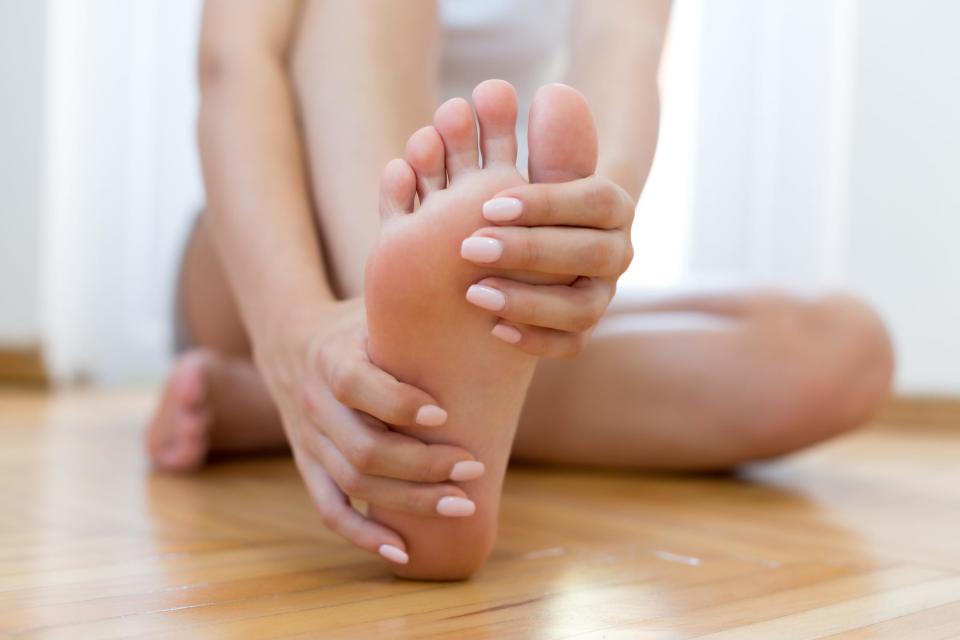Do your feet hurt? Get to know the symptoms and treatments for plantar fasciitis
Few things are more debilitating than foot pain. The ability to walk effortlessly and comfortably is easy to take for granted, but individuals who have experienced the common foot condition known as plantar fasciitis appreciate just how nice pain-free walking can be.
Sometimes called "policeman's heel" because of how often police officers are on their feet, plantar fasciitis is the most commonly treated foot condition," says Stephen Dering, an orthopedic clinical specialist at Massachusetts General Hospital.
It also commonly affects runners and other athletes, hairdressers, mailmen, surgeons, tour guides, foodservice and hospitality industry workers – anyone who is on their feet a lot. It even affects many people who are not, particularly those aged 50 and older.
What is plantar fasciitis?

The plantar fascia is a long, thick ligament that runs along the sole of the foot. It connects the heel to the front of the foot and is critical in maintaining arch support. "The plantar fascia is cartilage that sustains the foot's arch, like a bowstring," explains Dr. Loren Fishman, a professor of physical medicine and rehabilitation at Columbia University.
Plantar fasciitis occurs when such tissue becomes inflamed, irritated, or "actual tearing of those cartilaginous strands that make up the fascia occurs, usually just in front of the heel," says Fishman.
When this happens, it can be very painful, particularly when trying to stand or walk after periods of inactivity such as sleeping or prolonged sitting.
What causes plantar fasciitis?
Plantar fasciitis can be caused from carrying too much weight, as a result of an injury such as landing or stepping on one's heel wrong, because of a new walking surface that irritates bones or ligaments, or as a result of muscle or tissue degeneration that occurs naturally with age. Extensive physical activity can also contribute to the condition, which is why it's sometimes discovered after "periods of excessive training or a sudden increase in mileage or intensity," says Dr. Christy Heidema, a foot and ankle physical therapist at Intermountain Health.
Other risk factors include "inadequate footwear, arch type, elevated BMI, limited ankle range of motion, or calf tightness," explains Dering. Nerve compression or stress fractures can also contribute to the condition, as can spasms in theleg muscles that flex one's foot. "When opposing groups of muscles pull in opposite directions on the ends of the foot, it can painfully strain the fascia," explains Fishman.
How do you heal plantar fasciitis?
Many treatments have proven to help alleviate symptoms and promote healing from plantar fasciitis. Proper stretching (including some yoga poses) can relieve symptoms, Fishman says. So can safely administered medication or the proper application of ice. "Ice is commonly applied in the form of a frozen water bottle to roll out the bottom of the foot," explains Dering.
"Progressive exercises that strengthen deficits, mobility deficits, and foot posture," can also be helpful, says Heidema, and "activity modification or load management education," may also be needed. Supportive shoe wear and/or proper orthotics are essential both in treatment and prevention of plantar fasciitis.
"In more chronic cases that do not respond to conservative treatment, rarer cases may require corticosteroid injections, shockwave therapy, and surgery," adds Dering. "I also recommend connecting with a physical therapist who can teach proper stretching techniques and provide manual therapy consisting of joint and soft tissue mobilization techniques."
Working on your well-being? Read these next:
What do minerals do for the body? Calcium, magnesium, iron, zinc and what to know.
Most people know they need calcium. Here's how to tell if you're getting enough.
Walking is great. But will it actually build muscle?
Can vitamins help with restless leg syndrome? Everything you need to know.
This article originally appeared on USA TODAY: What is plantar fasciitis? Get to know the symptoms and treatments
